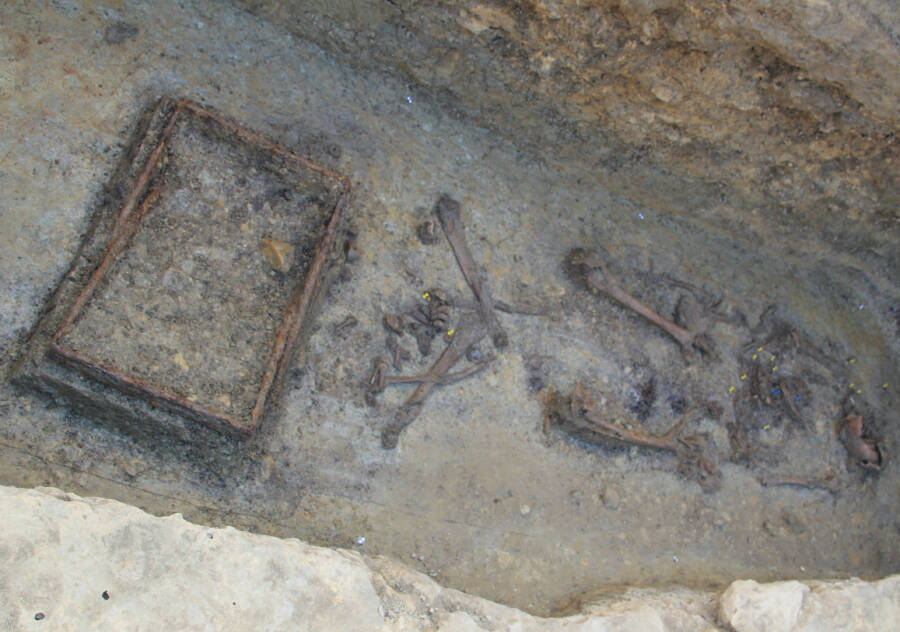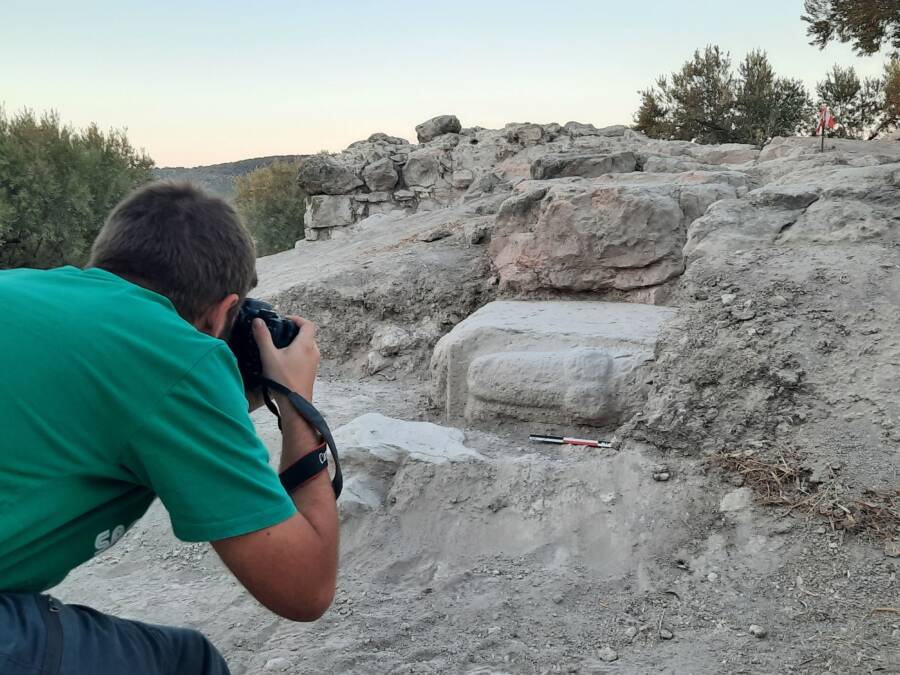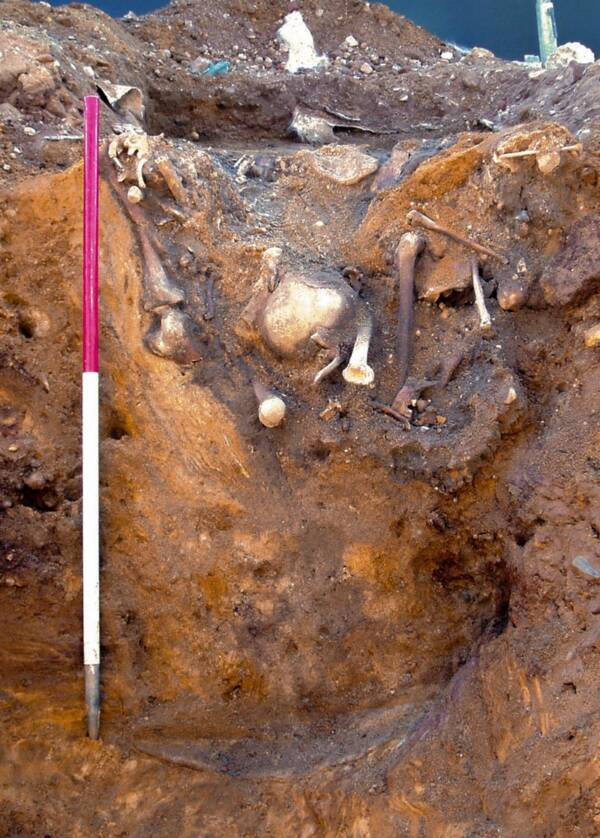Medieval folding chair unearthed in Germany, massive Roman phallus carving found in Spain, 800-year-old murder victims discovered in England.
Folding Chair Found Inside The 1,400-Year-Old Grave Of An Elite Woman In Southern Germany

Bavarian State Office For Monument ProtectionUncovered in the Middle Franconia region of Bavaria, the chair is believed to date back to the early Middle Ages, circa 600 C.E.
For decades, archaeologists have been uncovering grave sites containing folding chairs across Europe, all of them from the early medieval period and all of them burial plots for women — but even the experts remain mystified as to what it means.
Now, researchers in Germany uncovered another such chair in Bavaria, this one found in the grave of a middle-aged elite woman laid to rest in approximately 600 C.E. While the experts assume that the chair was a status symbol, no one is sure why it would have been carefully placed at her feet during her burial.
Dig deeper into this astounding discovery here.
Archaeologists Just Uncovered A Massive Roman Phallic Carving In Spain — And It Might Be The Biggest Ever Found

Municipality of Nueva CarteyaAncient Romans saw phalluses as a sign of good fortune and protection.
As archaeologists in Córdoba, Spain were excavating the El Higuerón archaeological site, they came across a surprising sight. There, carved into the foundation of a building, was the largest Roman phallus that they had ever seen.
Andrés Roldán, the director of the excavation, said that although phalluses are common finds at Roman archeological sites, the carving in Nueva Carteya was “unusually large.”
Read on in this report.
Scientists In England May Have Solved The “Cold Case” Of 17 People Who Were Thrown Down A Well 800 Years Ago

Giles Emery/NPS ArchaeologyThe bodies were discovered in an odd arrangement, suggesting they had not been buried but thrown in head first.
In 2004, the construction of a new shopping mall in Norwich, England, turned up a tangle of bones at the bottom of an 800-year-old medieval well. Based on their positioning, researchers determined that they’d been tossed in head-first. Now, thanks to DNA analysis, researchers have a better idea of who those people were — and how they may have died.
See more here.





